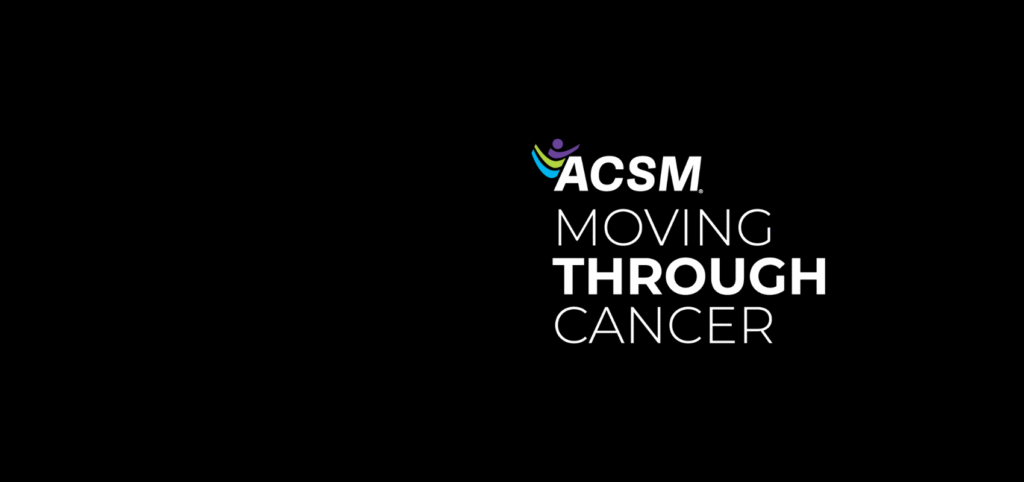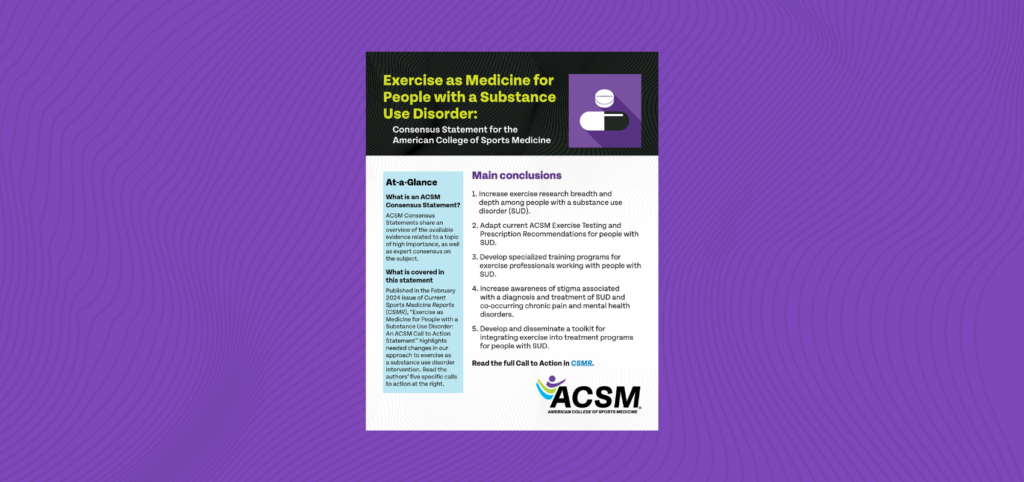ACSM Unveils Enhanced Cancer Exercise Program Directory

Leading resource provides accessible support for cancer survivors and clinicians Millions of individuals living with and beyond cancer can now find accessible, customized exercise programs to aid in their recovery and rehabilitation. ACSM’s Moving Through Cancer Program has announced an expanded Exercise Program Directory that is now available to cancer survivors, caregivers, oncology clinicians and […]
ACSM’s Moving Through Cancer Recognized by White House

ACSM’s Moving Through Cancer Program, part of the Exercise is Medicine® initiative, has been recognized by the White House Cancer Moonshot initiative for its notable work mapping exercise oncology program availability in the U.S., identifying disparities and publishing clinical guidelines recommending exercise to improve symptoms and treatment outcomes for people living with cancer. With a vision to […]
5 Things You Need to Know about Diabetes and Exercise

Dr. Colberg shares 5 key things that people with diabetes should know about exercise, including how exercise impacts blood glucose levels.
Visceral Fatness and “BrainAge”

There is little doubt that our brain changes as we age, with changes in structure that contribute to cognitive decline over time. However, the degree of change is highly variable across individuals in terms of its onset, rate and magnitude. How should we behave, and what should we change to ensure that our brains stay […]
Exercise Oncology: Ready for Prime Time

The field of exercise and cancer (exercise oncology) has a long history. In 1911, findings were published documenting that being more physically active was associated with lower risk of colon cancer. Throughout the 20th century, animal model experiments repeatedly showed that exercise slowed tumor growth. In the late 1980s, Winningham and MacVicar carried out the […]
ACSM and EIM: Developing a Network of Trusted Exercise Professionals

Individuals seeking expert guidance in becoming physically active face a marketplace full of exercise professionals with certifications from several reputable, and sometimes not-so-reputable, organizations. With so many exercise certifications available in the U.S. market, there is often widespread confusion as to who are trusted sources of expert guidance. The American College of Sports Medicine(ACSM) has […]
Exercise as Medicine for People with a Substance Use Disorder

Exercise may be an effective adjunctive treatment for substance use disorders, but large clinical trials and specialized training are needed to inform practice. This infographic outlines ACSM’s call to action statement purpose and highlights the key action items.
Making Physical Activity Business as Usual: A Comparison of Design Features in Cancer Care Models Across the Atlantic

Evidence shows that physical activity is highly beneficial for people living with and beyond cancer and is one of the most effective ways to manage the side effects of treatment and improve quality of life1. Despite this, physical activity support is not routinely available within cancer care and most people diagnosed with cancer are not […]
Do Sports Medicine Physicians Exercise More Regularly than Primary Care Physicians?

It is well established that regular physical activity is beneficial for the human body and mind. Many studies have outlined the effects of aerobic exercise and resistance training for longevity and optimization of the health span. There are well-established guidelines for physical activity, such as Physical Activity Guidelines for Americans by the U.S. Department of Health and […]
Maximizing Pregnancy Health: The Role of EIM and Multidisciplinary Care

Pregnancy is one of the most complex periods in human life, and every year more research is published detailing how events experienced during gestation affect the future growth and development of the child. Epigenetic factors are particularly impactful during this time, and maternal lifestyle during pregnancy is of enormous importance. Thus, the current worldwide rates […]
